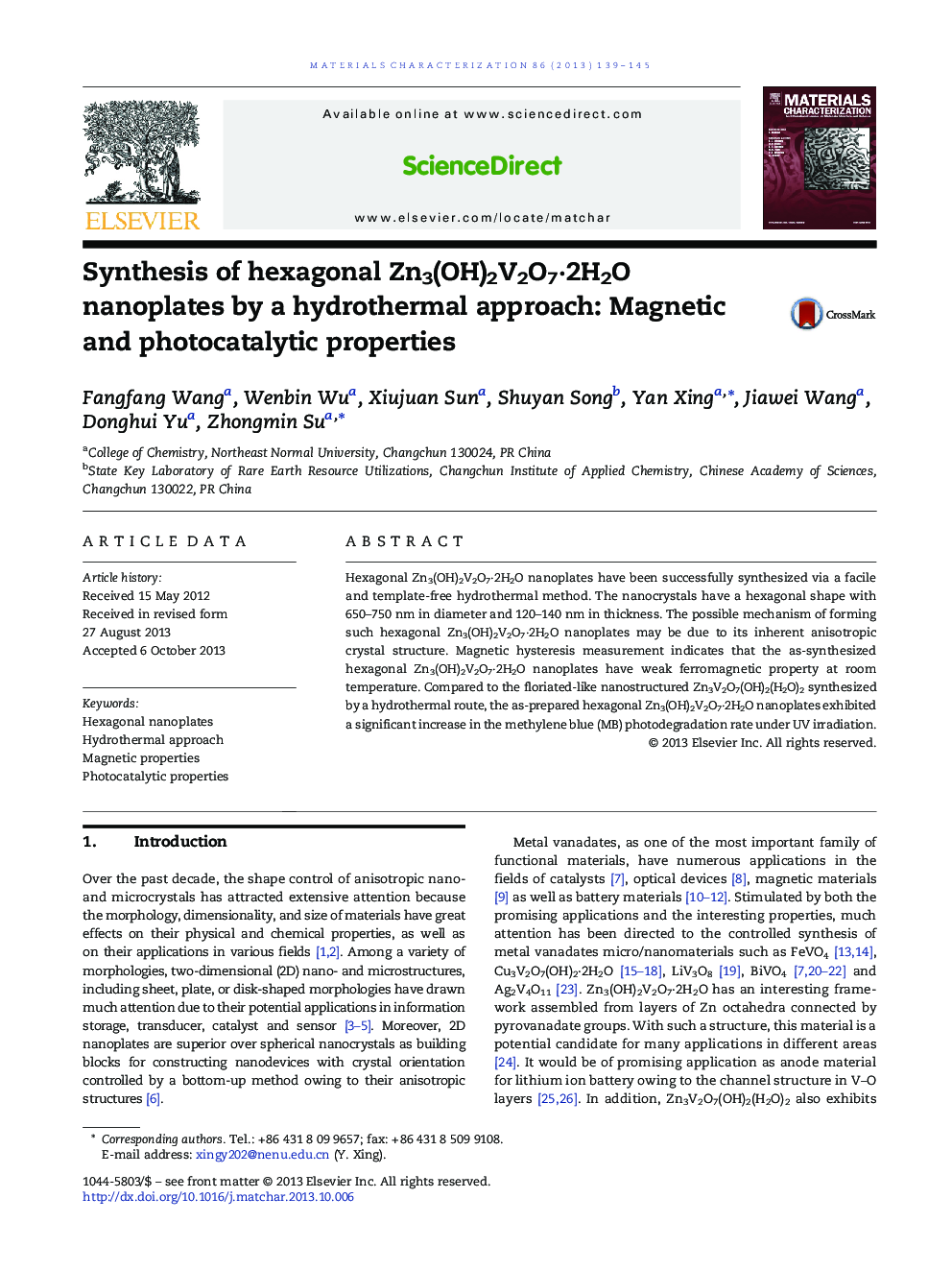| Article ID | Journal | Published Year | Pages | File Type |
|---|---|---|---|---|
| 1571172 | Materials Characterization | 2013 | 7 Pages |
•Hexagonal Zn3(OH)2V2O7·2H2O nanoplates was synthesized via a hydrothermal method.•Magnetic study indicates that the nanoplates are of weak ferromagnetic property at room temperature.•The nanoplates exhibit greatly enhanced activity in the UV-light photocatalytic degradation of methylene blue.
Hexagonal Zn3(OH)2V2O7·2H2O nanoplates have been successfully synthesized via a facile and template-free hydrothermal method. The nanocrystals have a hexagonal shape with 650–750 nm in diameter and 120–140 nm in thickness. The possible mechanism of forming such hexagonal Zn3(OH)2V2O7·2H2O nanoplates may be due to its inherent anisotropic crystal structure. Magnetic hysteresis measurement indicates that the as-synthesized hexagonal Zn3(OH)2V2O7·2H2O nanoplates have weak ferromagnetic property at room temperature. Compared to the floriated-like nanostructured Zn3V2O7(OH)2(H2O)2 synthesized by a hydrothermal route, the as-prepared hexagonal Zn3(OH)2V2O7·2H2O nanoplates exhibited a significant increase in the methylene blue (MB) photodegradation rate under UV irradiation.
Graphic AbstractFigure optionsDownload full-size imageDownload as PowerPoint slide
